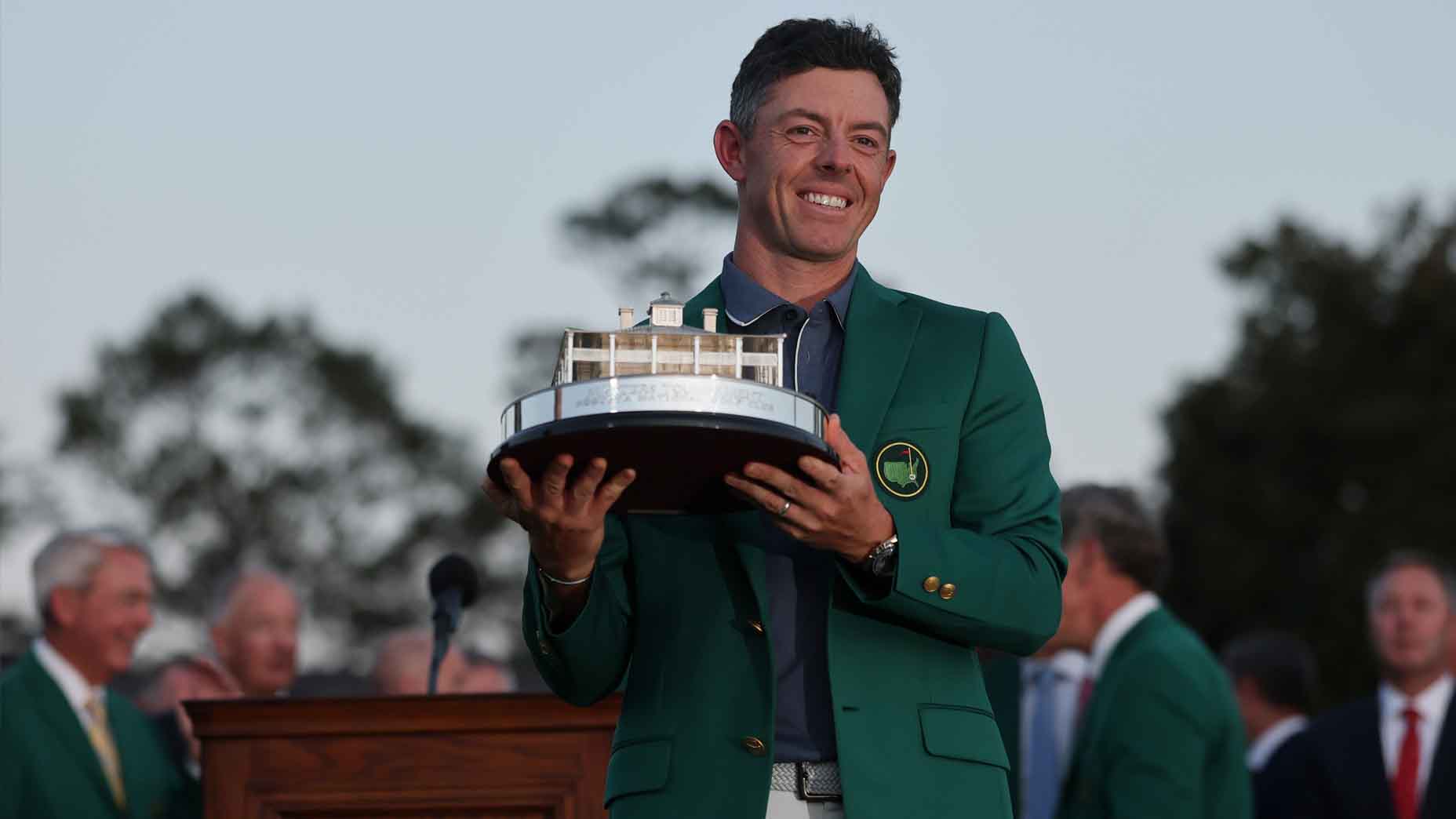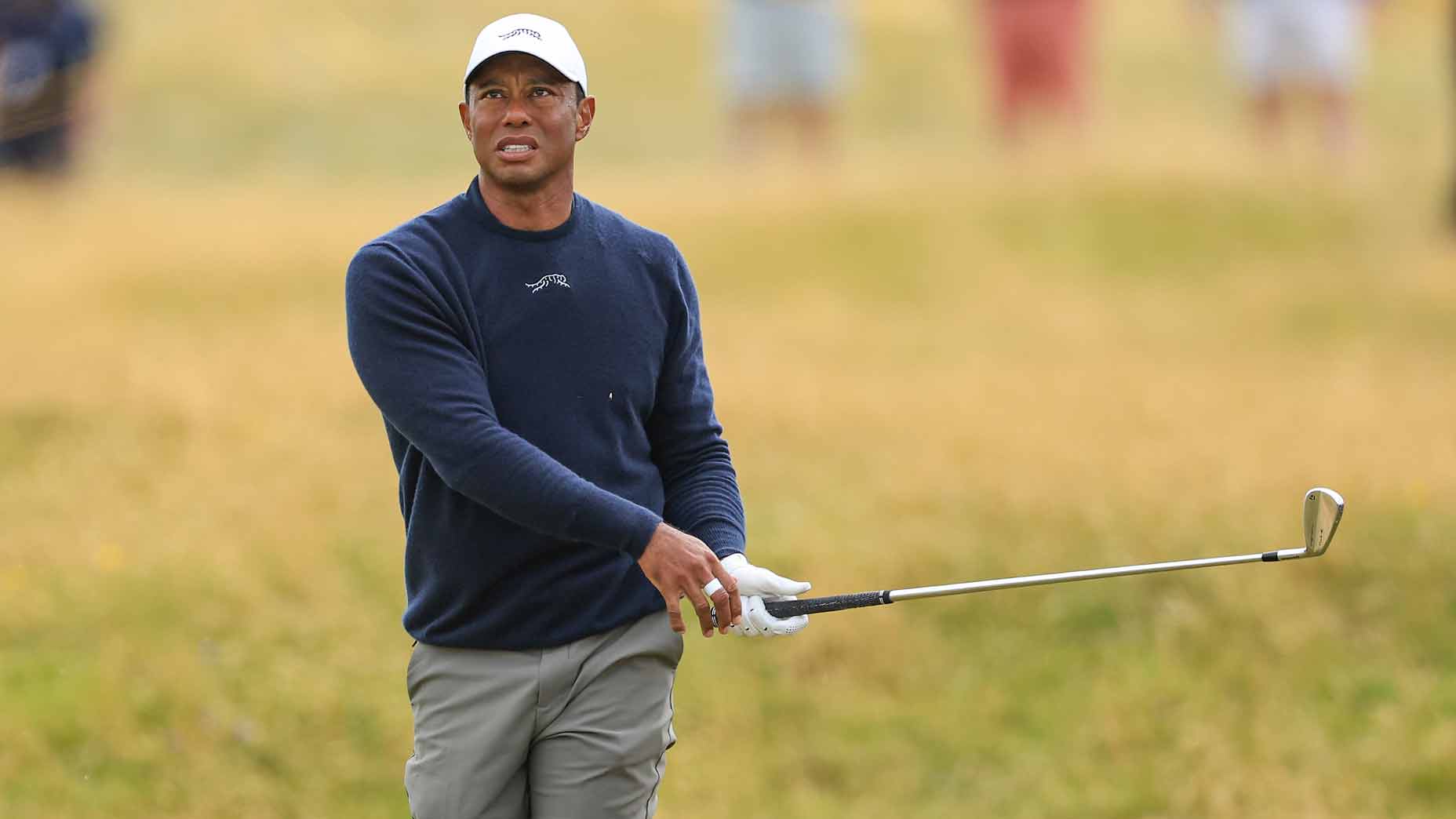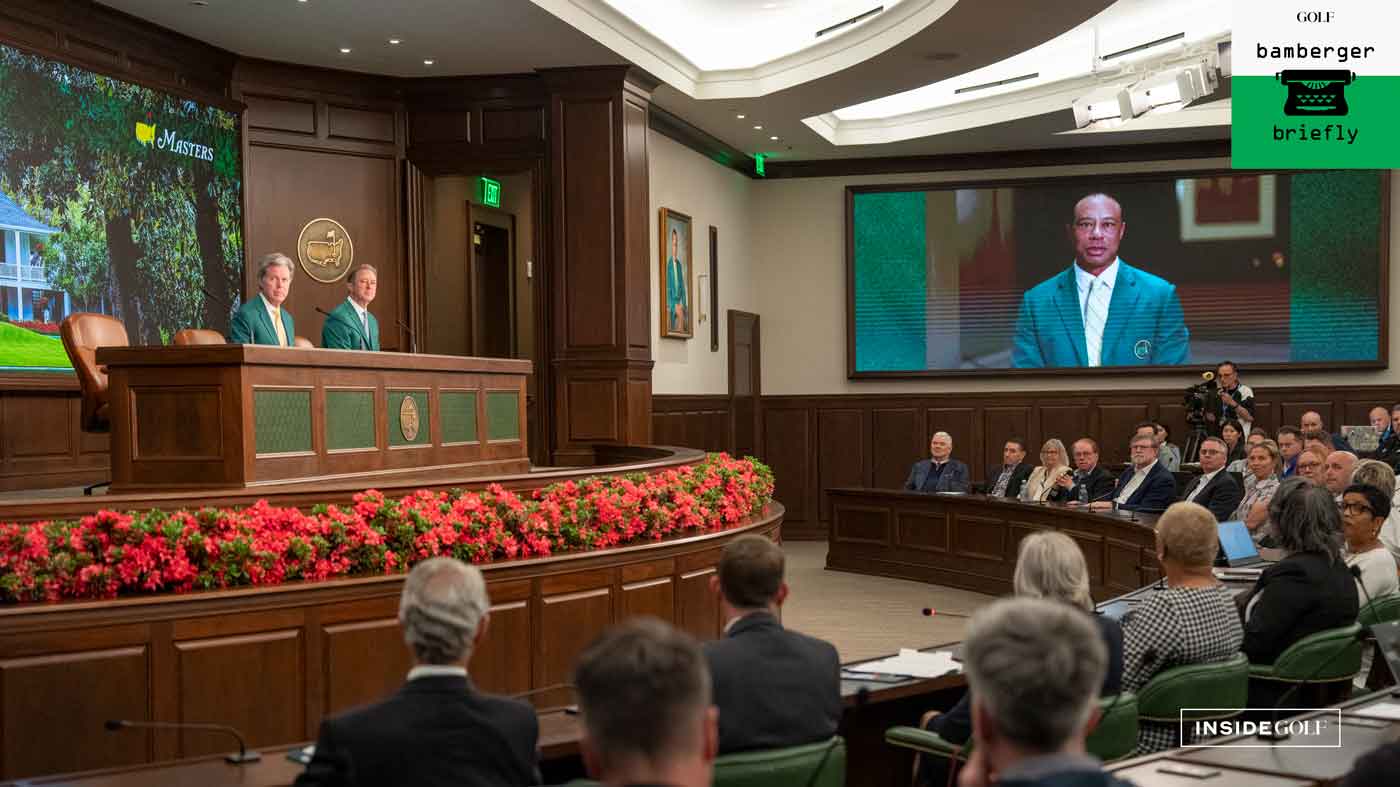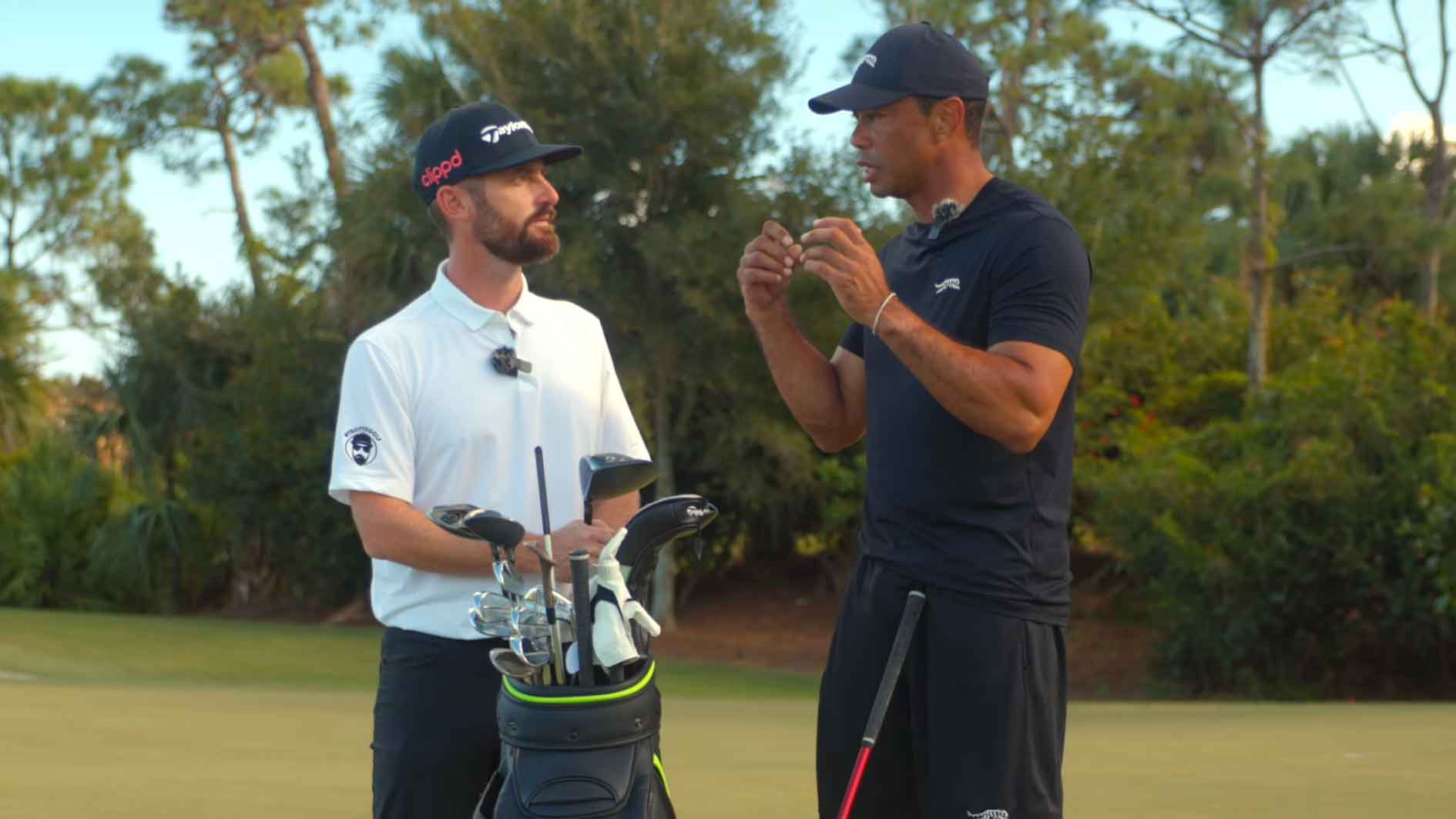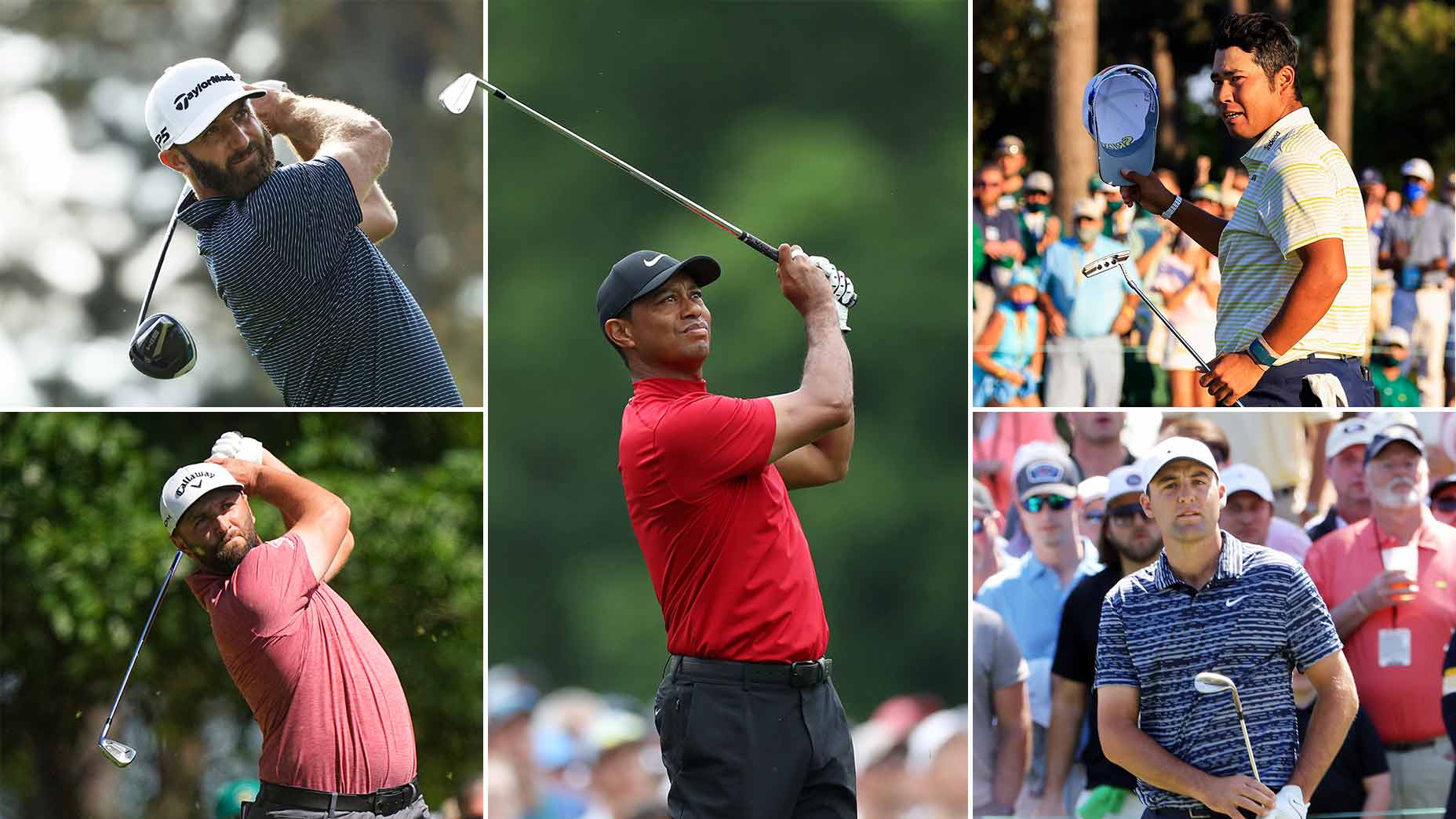Charlie Woods struggles in U.S. Junior Amateur debut but still puts on show
- Share on Facebook
- Share on Twitter
- Share by Email

Charlie Woods at the U.S. Junior Amateur at Oakland Hills on Monday.
getty images
Playing golf in a fishbowl isn’t easy.
Ask Tiger Woods.
“You get so much attention,” he once said. “It’s really hard.”
Woods was 15 when he shared that insight. The year was 1991, and he was an ascendant junior talent the likes of which the game had rarely, if ever, seen. At 2, he already had appeared on national TV with Bob Hope. At 3, he had broken 50 for nine holes, and, at 8, he’d broken 70 for 18. At 15, Tiger won his record sixth Junior World Golf Championship, carding a final-round 69 at fire-breathing Torrey Pines South. In the wake of that victory, Dana Haddad wrote in the Los Angeles Times, “Don’t let his big eyes, bony arms and knobby knees fool you. Eldrick ‘Tiger’ Woods of Cypress, just a babe at 15, is the man-child of golf.”
You know what came next: the three U.S. Junior Amateur titles followed by three U.S. Amateur victories. The 82 PGA Tour wins, including 15 majors. Not included in that stat line is another number of great importance to Woods: 2, as in the number of children he has had — a daughter, Sam, who is now 17, and a son, Charlie, 15.
Sam never took to golf, at least not seriously. But Charlie has, developing into a formidable talent in his own right. He’s a rising sophomore at The Benjamin School, in Palm Beach, Fla., where alongside Justin Leonard’s son, Luke, and a handful of other teenagers who could beat the best golfer at your club, he plays on the boys’ team that last fall won the school’s fourth state championship title. (Two of Jack Nicklaus’ boys, Gary and Michael, also attended The Benjamin School.)
At a Florida qualifier for the U.S. Junior Amateur last month, Charlie was three over through two holes. Undaunted, he made a pledge to himself: “I just told myself not to make any more bogeys or doubles.” Charlie played the next 16 holes in four under and signed for a one-under 71. The comeback earned him medalist honors and a spot in his first U.S. Junior Amateur, at historic Oakland Hills Country Club, near Detroit, where Charlie’s father, as an amateur, made the cut at the 1996 U.S. Open.
Golf has an uncanny way of producing full-circle moments; it’s one of the game’s many charms. But Charlie playing in his first U.S. Junior feels especially meaningful, given his father’s rich history in the event. For the younger Woods, it’s also the latest phase in his coming-out party: playing in a state championship match is one thing, as is pegging it in a nationally televised exhibition like the PNC Championship or trying to Monday qualify for a PGA Tour event. But the U.S. Junior is another level yet: a national championship run by the United States Golf Association. Top Gun for junior golfers. Merely qualifying is a huge achievement.
Which brings us back to the fishbowl.
Charlie, at 15, now knows what his father knew at 15: Charlie’s competitive rounds are different for him than they are for his peers, especially when Tiger is in attendance. More eyes. More scrutiny. More distractions. At the PGA Tour qualifier Charlie entered in February, fans spilled onto the fairways to be near him, with some asking for autographs mid-round. “You can’t stop anyone from coming, and if Tiger’s there, it’s crazier,” Charlie’s high school coach, Toby Harbeck, told me last year of the scene at some of his high school tournaments. “Trust me, there are people in trees taking pictures. Microphones in his face.”
The attention around Charlie was evident at Oakland Hills Monday morning. As he teed off on the North Course’s 1st hole just before 8:30, a crowd of a few hundred, phones raised, circled the tee box — this at a tournament where groups rarely attract more than a few dozen fans. Standing just behind and to the right of the tee was Tiger, in a white hat and striped Sun Day Red polo. He was hard to miss because he was standing on a berm, which elevated him above the rest of the onlookers. “I’ve been in a gallery like this before,” Chase Kyes, a rising high school senior from Alabama and one of Charlie’s two playing partners, would later say, “but never played in front of a gallery like this.”
Charlie Woods had a couple hundred people watching him start the US junior amateur as his dad watched from a raised berm behind him pic.twitter.com/bh4VXIJhKI
— Larry Lage (@LarryLage) July 22, 2024
Charlie hit an iron at the par-4 1st and opened with three pars, but his steady play would not last. At the 200-yard par-3 4th, he needed three shots to find the green and made double. Tiger was in tow, looking on from beside tees and greens. Charlie is used to his presence, but his playing partners were not. “I looked over at him a couple of times, but I really tried not to,” Kyes said of Tiger. “There’s a lot of pressure with his name.”
Charlie got a stroke back at the par-5th, but then finished the front nine bogey-par-bogey-double to turn in 40, the same score his father shot in the first nine holes at the 1997 Masters before storming back to a historic win. But this round, for Charlie, would produce no such fireworks. On the back nine, he made three doubles, two bogies and a lone birdie to shoot 42 and finish at 12 over. With 60 players shooting par or better Monday, Charlie more than likely had shot himself out of the tournament.
Charlie didn’t speak with reporters after the round, but his playing partners did. Two things seemed to strike them: the weight on Charlie’s shoulders, and the excitement they felt playing in front of such a large gallery.
“The amount of pressure he has on him is unbelievable,” said Davis Ovard, a rising sophomore at Baylor who was Charlie’s other partner. “I can’t imagine being in his shoes.”
Ovard, who shot 73, said he saw more of Tiger during Sunday’s practice round than he did on Monday. “He was just walking down the middle of the fairways with us and on the greens with us, and we were talking about the course,” Ovard said. “It was crazy.”
Kyes, after an opening 70, said he loved feeling the rush of playing in front of a swell of fans. ”It’s great for the game, especially for young kids like us,” he said. “Hopefully it won’t be the last time we’re in front of crowds like this. As early as you can get used to it, the better off you will be.”
Charlie’s surely getting used to it. Maybe he already is. What other choice does he have?
Latest In News

Alan Bastable
Golf.com Editor
As GOLF.com’s executive editor, Bastable is responsible for the editorial direction and voice of one of the game’s most respected and highly trafficked news and service sites. He wears many hats — editing, writing, ideating, developing, daydreaming of one day breaking 80 — and feels privileged to work with such an insanely talented and hardworking group of writers, editors and producers. Before grabbing the reins at GOLF.com, he was the features editor at GOLF Magazine. A graduate of the University of Richmond and the Columbia School of Journalism, he lives in New Jersey with his wife and foursome of kids.




